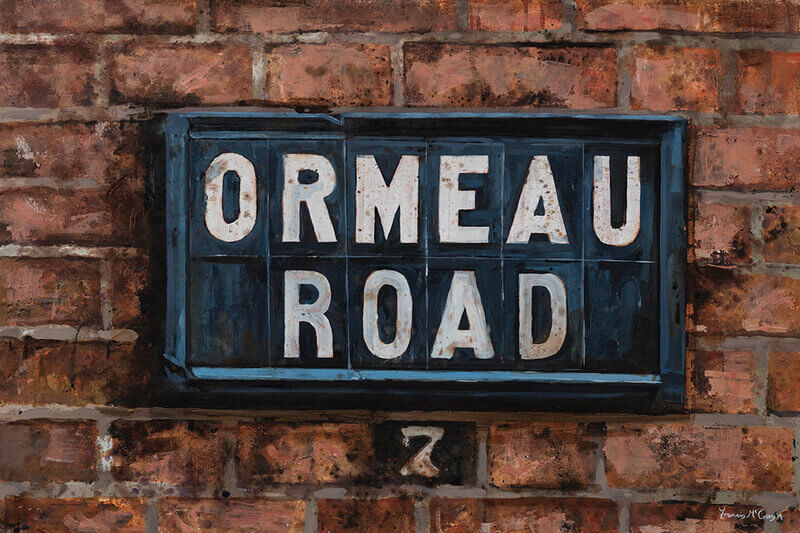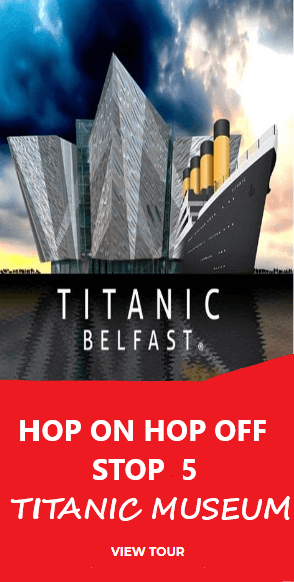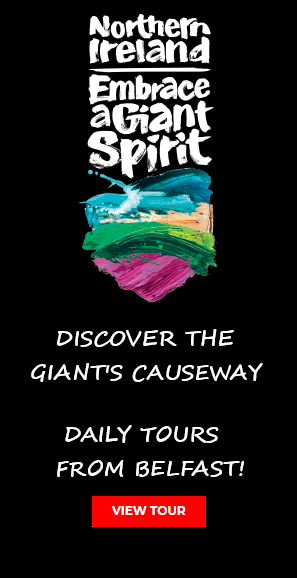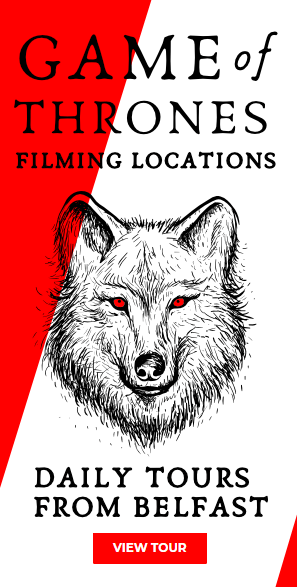Ormeau Road History
In the early 1800s, a bridge was constructed linking Newtownbreda village and Belfast, which was the start of the Ormeau Road we know today.
Originally, Ormeau Road was known as the New Ballynafeigh Road but later underwent a name change.
Its namesake is Ormeau House, the home & estate of the 2nd Marquess of Donegall, which the road ran past as seen below!
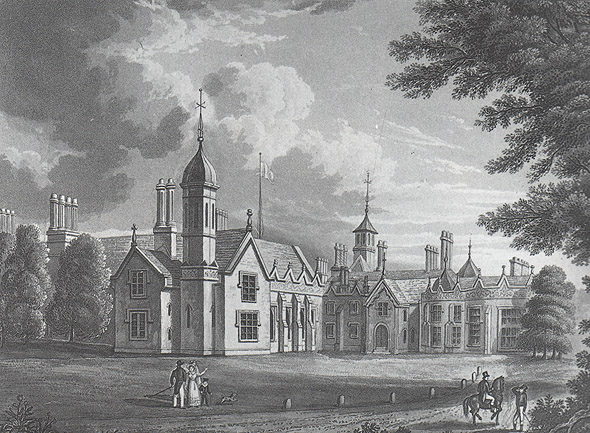
The construction of the Ormeau Bridge started in 1809 and it is considered an important aspect of the history and architecture of the surrounding region.
However, this bridge was deemed unusable and demolished after a few years, and a new one was eventually constructed.
The new bridge was opened in 1863 and designed by Charles Lanyon and is almost identical to his earlier Queen's Bridge in the city centre.
Lanyon is famous for his many designs around Belfast, including the Lanyon Building at Queen’s University and the Albert Memorial Clock.
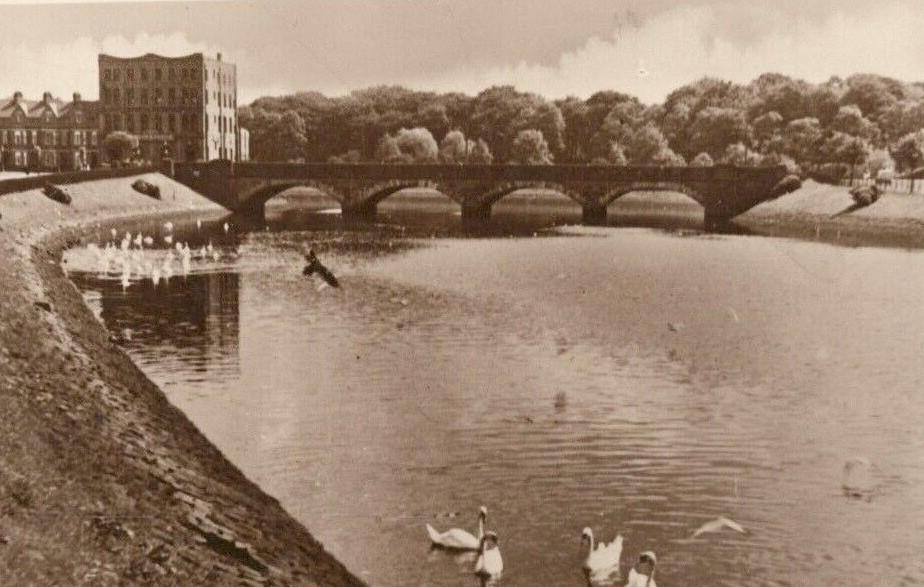
Did You Know ?
The River Lagan, which runs underneath the Ormeau Bridge, serves as a divider between County Antrim and County Down.
If you're crossing the bridge heading towards Lower Ormeau Road, you're entering County Antrim, which includes the inner-city areas of Belfast. Heading towards Upper Ormeau Road takes you into County Down.
The river itself stretches over 85 km from Slieve Croob in County Down through Belfast where it enters Belfast Lough.
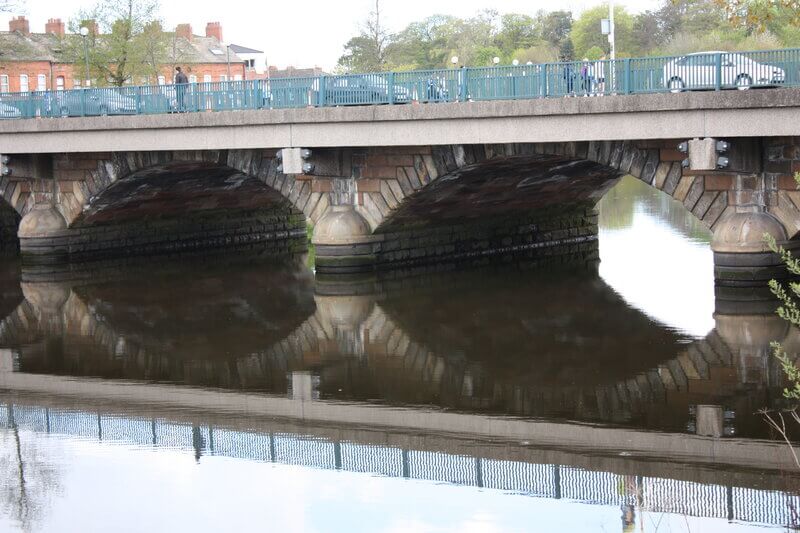
Famous Landmarks
Ormeau Road was once home to Ormeau Bakery, which was the largest independent bakery in Ireland and famous for producing a variety of breads, such as soda bread, a classic Northern Irish food.
The bakery was founded by Robert Wilson in 1875, who revolutionized bread production and distribution methods.
The buildings were established in 1890 and remained largely unchanged for several generations under the Wilson family's ownership. Anyone who grew up in the early 1990s may remember the TV advert below.
The company marked its 125th anniversary in 2002 but was eventually acquired by Mother's Pride, resulting in the bakery's closure.
The building still stands and has been transformed into high-end apartments with rooftop gardens, with local shops and cafés operating on the ground floor.
Ormeau Park
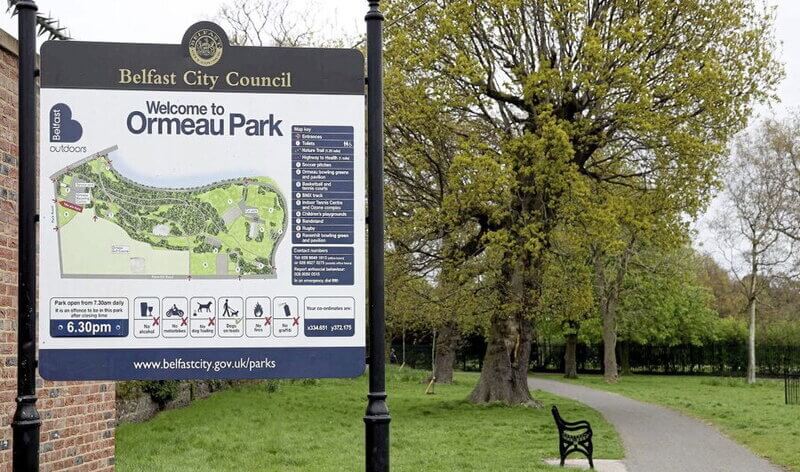
Dating back to 1871, Ormeau Park is the oldest municipal park in the city and covers the area from Ormeau Road to Ravenhill Road.
The park was once part of the Donegall family estate and was their home from 1807 after they moved from Donegall Place to Ormeau Cottage.
The building was expanded by George Chichester, 2nd Marquess of Donegall who had lived there until he died in 1844.

The estate was purchased by Belfast Corporation in 1869 after the family had put it up for sale to pay off their growing debt.
The park was opened to the public in 1871 and in celebration of the city's first public park, a parade was held from Carlisle Circus and through Belfast. The festivities drew a large crowd and ended with speeches in the park.
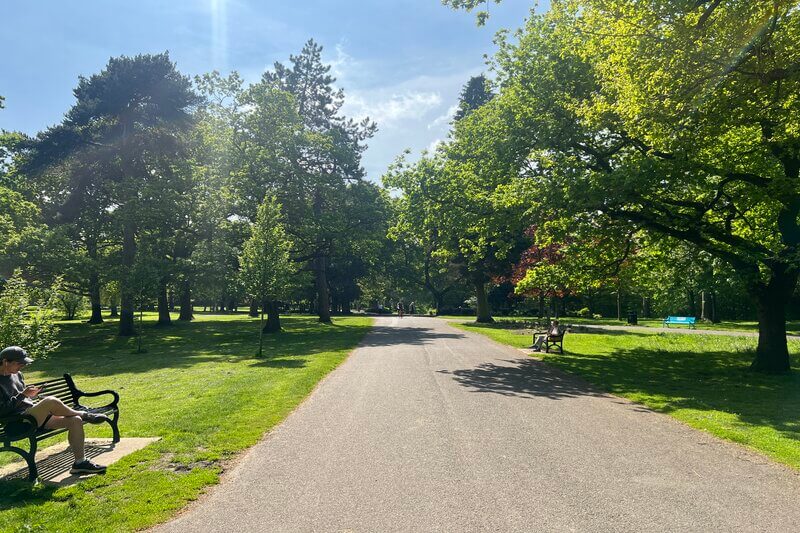
Nowadays, it is one of the largest and busiest parks in the city, offering a range of facilities such as soccer pitches, bowling greens, pavilions, a BMX track, and basketball and tennis courts.
In addition, there are two children's playgrounds and in the warmer months, you'll find ice cream and coffee trucks throughout the park. Sharing the grounds is also the Ormeau Golf Club.

Fun Fact - While there are no bodies of water in Ormeau Park today, there used to be a boating lake on the grounds.
It is said that rubble from air raid shelters was used to fill in the lake before it was re-landscaped. On the photo below, marked in blue is where the bodies of water once were in the park.
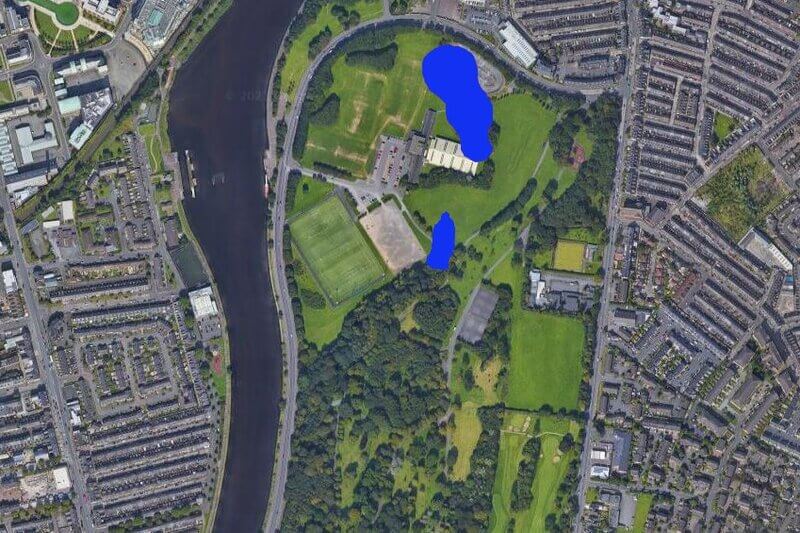
The Troubles - Ormeau Road
Lower Ormo Shooting In 1992, a shooting incident took place at Sean Graham bookmaker's shop on Lower Ormeau Road.
The attackers, who were members of the loyalist paramilitary group known as the Ulster Defence Association (UDA), shot and killed five people and injured nine.
The shop was located in a predominantly Irish nationalist area and all the victims were local Catholics.
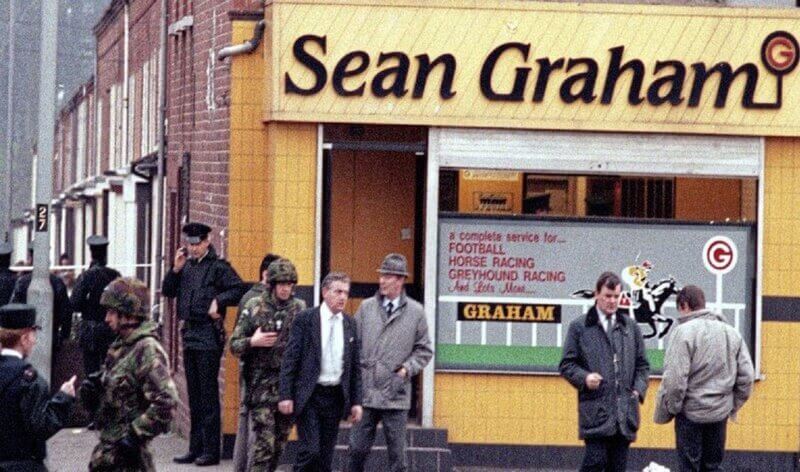
The UDA claimed responsibility for the attack through the pseudonym "Ulster Freedom Fighters" and cited the Teebane bombing, which was carried out by the Provisional IRA less than three weeks prior, as the reason for the attack.

During the mid-1990s, the Ormeau Bridge became a dividing line between both communities, with seasonal band parades no longer being able to march down the Lower Ormeau Road.
This was due to rapidly changing demographics within the area over the previous 20+ years, and outrage after the 1992 atrocity at the bookmakers shop.
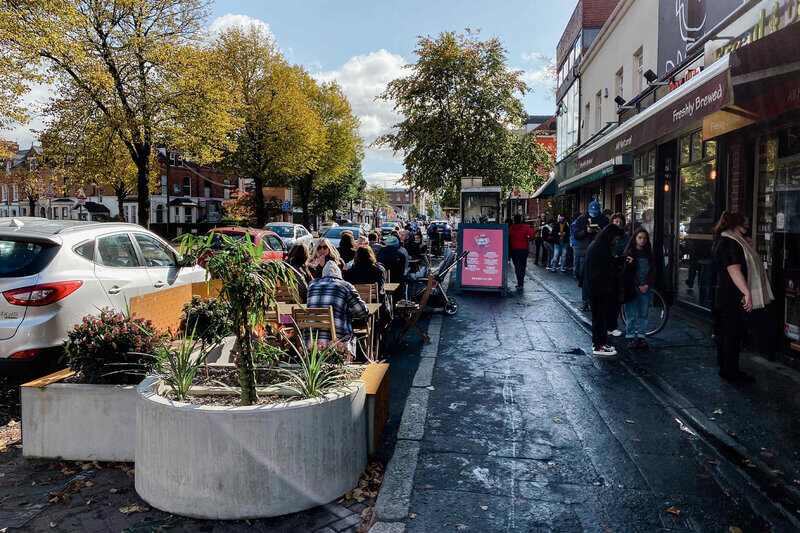
Why Visit? The Ormeau Road has fast become a hot spot for those looking for vibrant nightlife, tasty food, relaxing coffee shops and unique shops.
If you go up the road, you will cross the Lagan and reach Ormeau Park, where the famous Belsonic summer music festival is held. This festival has featured various renowned artists such as The Killers, Dermot Kennedy, and Liam Gallagher.
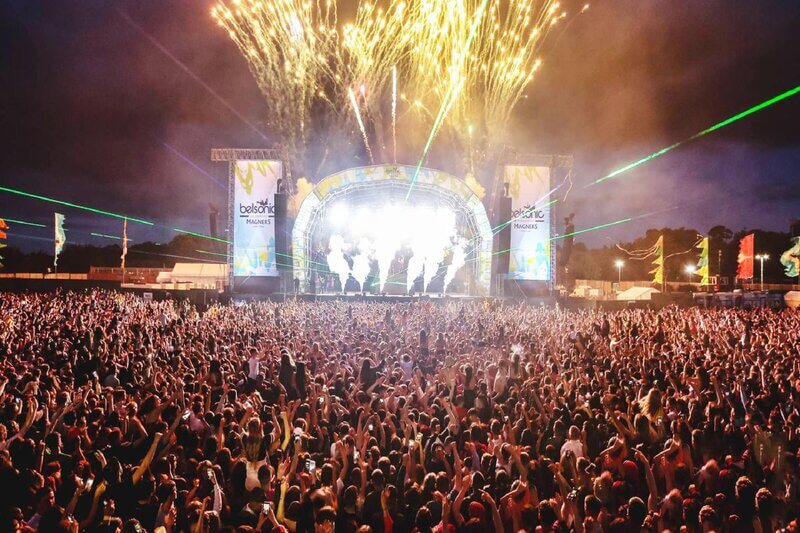
Towards the end of the road, there are larger bars like the Errigle Inn and excellent dining options.
The Upper Ormeau Road is within proximity to the Kingspan Stadium, which is the home of Ulster Rugby, making this area very popular on match days.
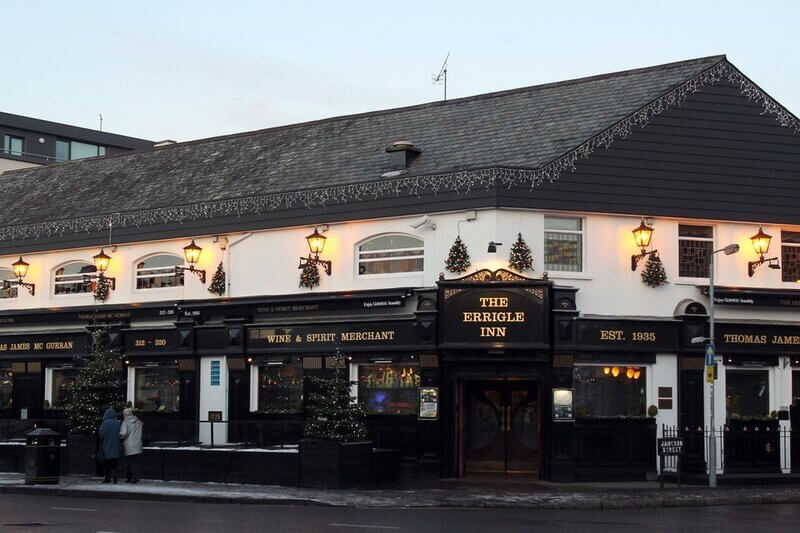
This district attracts many people due to its location near the river, a beautiful park, lovely homes, and its peaceful atmosphere.
It's also highly convenient as it is situated close to Queen's University, and The Golden Mile area of both Shaftsbury Square and the Dublin Road.
The upmarket village of Stranmillis resides nearby with the Ulster Museum & Lyric theatre.
Although the Ormeau Road is no longer a hidden gem, even on crowded weekends and sunny days, it is well worth a stop for a coffee or something to eat.
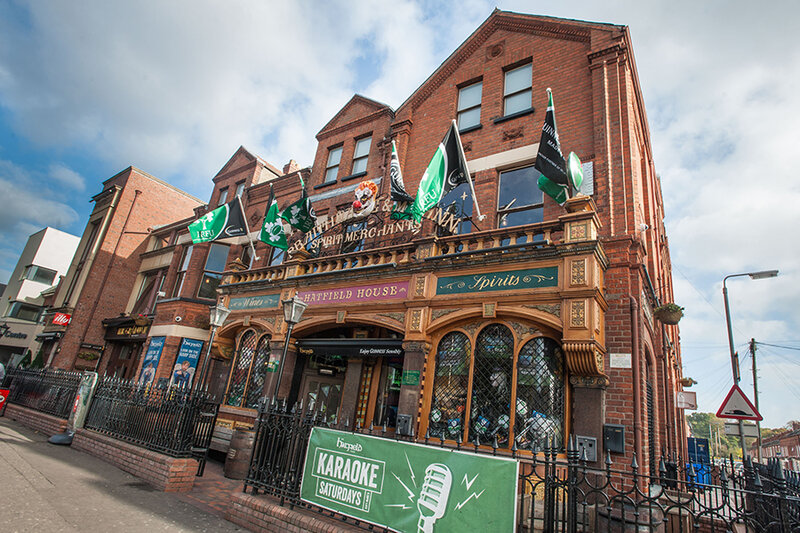
The lower area of Ormeau links up with a significant student area known as the Holylands, which makes the bars lively but sometimes noisy.
The stunning Hatfield bar above is one of Belfast's oldest pubs, and designed in the same style as the famous Crown bar in Great Victoria Street.
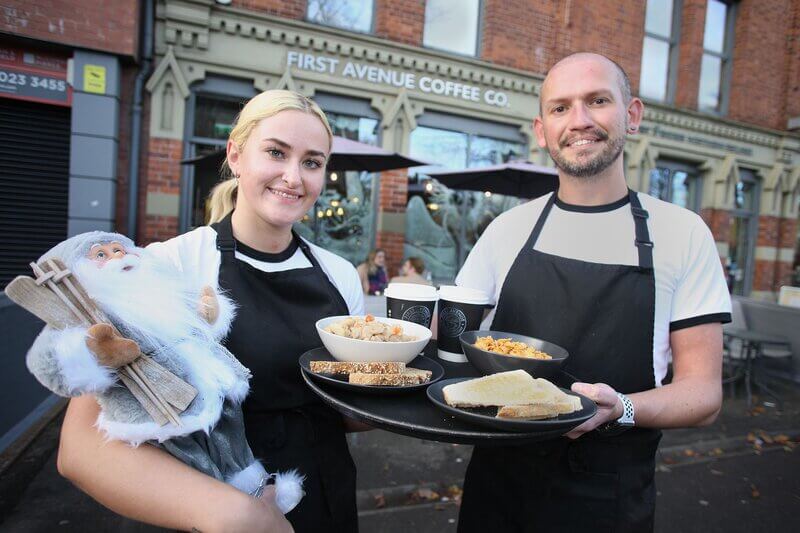
Discover & Explore
*No matter what things to do in Belfast you decide upon, be sure to fully discover the city on the Belfast hop on hop off tour and make the most of your stay.
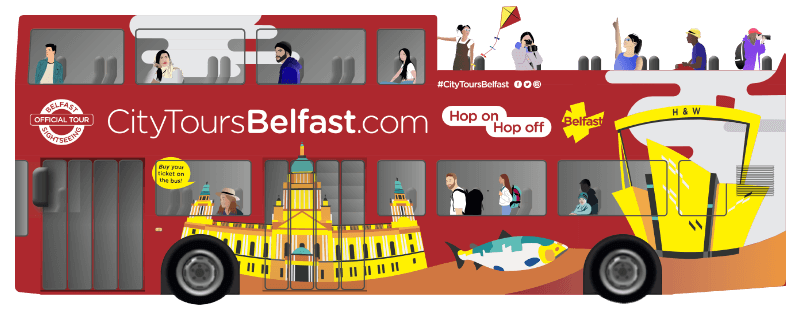

- Ormeau Road FAQS -
While Ormeau Road itself can be a busy thoroughfare, the surrounding area is highly sought after thanks to its close proximity to Ormeau Park, a great selection of cafés and restaurants, and easy access to a range of schools. These amenities make it a genuinely attractive and convenient place to live.
Ormeau is french for 'young elms'!
The Ormeau Road is part of south Belfast.
Like all places, if you are unfamiliar with the area, it is best to avoid going for a late-night stroll in case you run into the wrong people.
Ormeau Road was once divided by the River Lagan — Lower Ormeau was predominantly Catholic, while crossing the bridge toward Upper Ormeau brought you into a predominantly Protestant area.
Nowadays, the Ormeau Road is home to a diverse and vibrant community, with people from a wide range of backgrounds living side by side.


